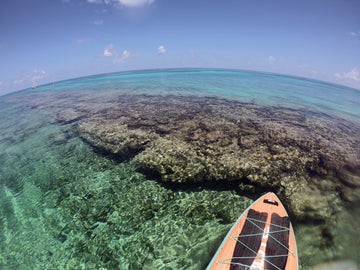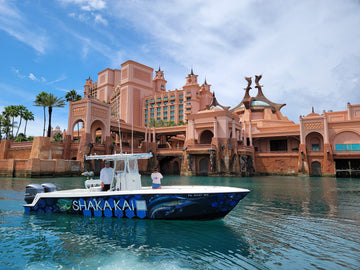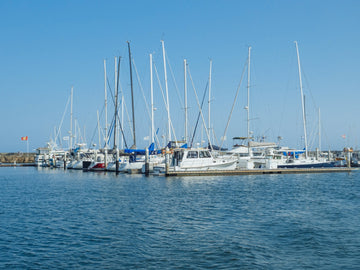Dry Tortugas National Park - the most beautiful waters you can see without leaving the country. Named for the abundance of turtles and the lack of a freshwater source, this island is truly something everyone should try to experience.
Getting there can be difficult. Private boat owners are often warned away from it unless the captain is an experienced mariner. While it seems straightforward, ocean weather and boat equipment can sometimes be unpredictable. This is not a trip where you can rely on GPS alone - you should be prepared to use charts and your own experience if the need arises. Once close to the island, the harbor is well marked, but can become a challenge if you are not careful. Located just north of the Gulf Stream, the Dry Tortugas/Garden Key is surrounded by steep shoals and barrier reefs. This is not a trip to make unprepared.
If you are not a boat owner, there is a daily ferry that departs early in the morning. It brings day-trippers and campers alike. That’s right! You can camp right next to Fort Jefferson. Beach camping is a popular Florida must-do and it doesn’t get more pristine than Dry Tortugas. The reefs there have been untouched for decades; a diver’s dream! Don’t believe me? Dry Tortugas became a National Park in 1935! If boating isn’t your style, there are seaplanes that go back and forth throughout the day between Key West and Garden Key.
The Park does not provide food or freshwater. If you are planning on camping, make sure to bring more than you think you need! It is better to leave with extra than to leave early because you didn’t bring enough.

Fort Jefferson, even as the largest brick structure in the United States, is easily walkable in only a few hours. Dry Tortugas National Park is a completely unique Florida Keys experience…but unfortunately, it is a very short one. For my new readers: I am an experienced diver and snorkeler, and a budding underwater photographer. While going slow enough to take pictures and teach my mom how to take a REEF.org Reef Fish Identification and Abundance survey, we still swam around the entire moat wall in about two hours (that’s being generous). The moat wall is a very shallow reef - too close to the surface for many corals and therefore comprised largely of encrusting corals and sea fans. There are a few other kinds of soft corals, but relatively low biodiversity when compared to deeper reefs. However, this doesn’t make it any less beautiful! The fish are high in abundance and, if you’re lucky, you may see a few other critters such as an octopus or sea hare!


Just three miles West of Garden Key and Fort Jefferson is another must-see: Loggerhead Key! If you are a private boat owner, there are two mooring buoys that you may use for up to two hours. This is another attraction that inexperienced boaters are warned away from: due to the massive coral heads that dot the surrounding area. If you’re willing to take a short walk around, Loggerhead offers a magnificent historic lighthouse and the beautiful Little Africa reef (named for its shape from an aerial view). When snorkeling such a shallow reef, it’s important to remember some general rules that keep you and the reef safe:
- Do not stand anywhere on the reef. If you have to readjust your mask, move to deeper water and kick to stay afloat; or move to a barren sandy area. Standing on the corals can do great harm to the reef and your person.
- Do not touch any corals or creatures. Corals excrete an important mucus layer that protects them from the sun and harsh seawater; the oils on our skin can take it away and leave them exposed! Certain fish are poisonous to touch, and even if they aren’t, you shouldn’t be touching anything that can turn around to bite you. When diving, it is best to keep your hands to yourself!
- It is Federal law that nothing can be removed from a National Park. Just because Dry Tortugas is underwater, doesn’t make it an exception to the rule. Everything plays an important role in its ecosystem - no matter how small.
- While it’s important to protect your skin from the sun, it’s also important for the reef to stay healthy. Do your best to use a sunscreen that does not contain oxybenzone; a chemical that is harmful to coral tissues. Zinc based sunscreens will do a better job of protecting you anyway (trust me, I’ve tried every kind there is)! If you are unable to get sunscreen without oxybenzone, make sure to apply way in advance. By giving the sunscreen time to be absorbed by your skin, not only will you be less likely to get burned, but also the chemicals are less likely to leech out into the water.







